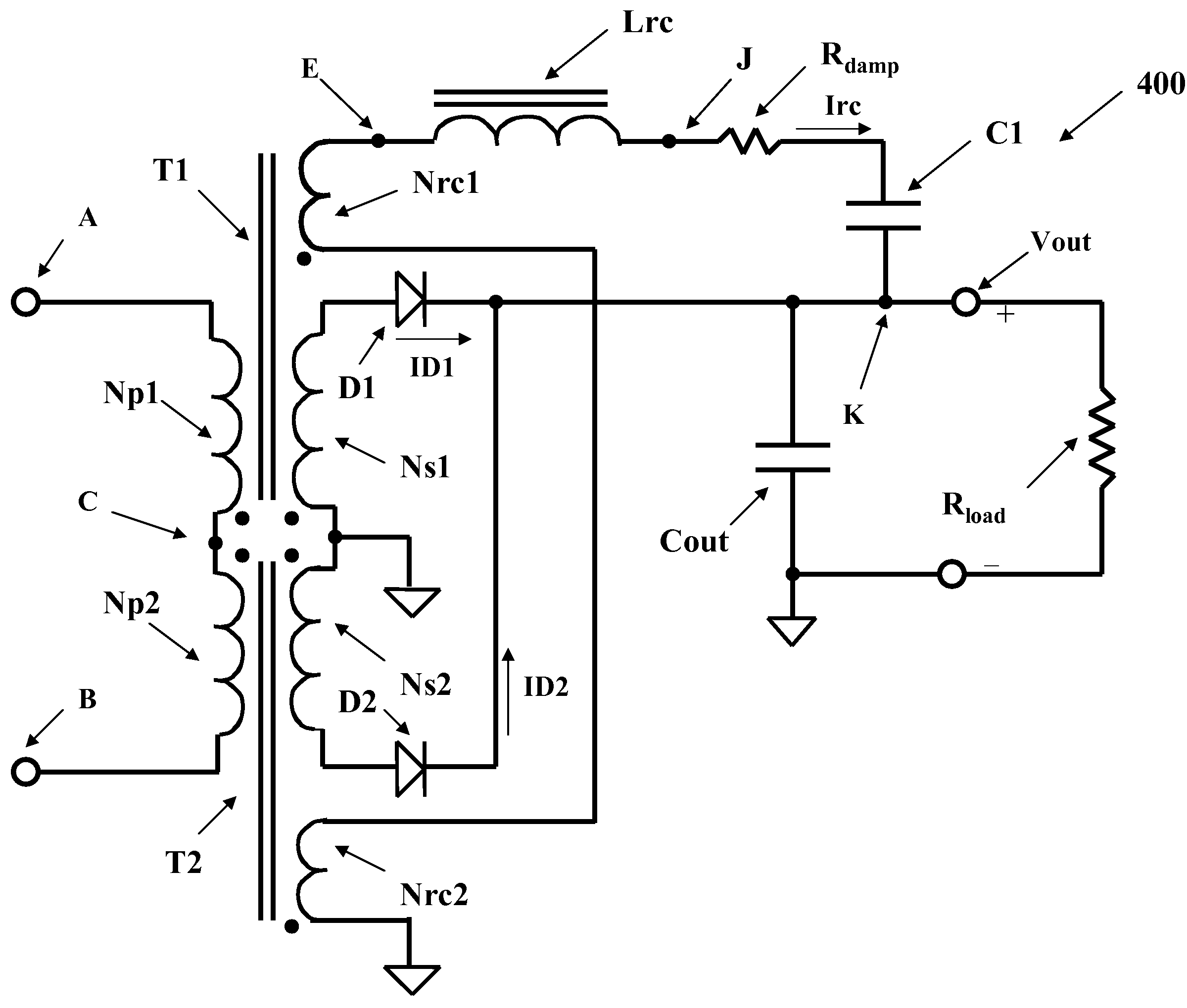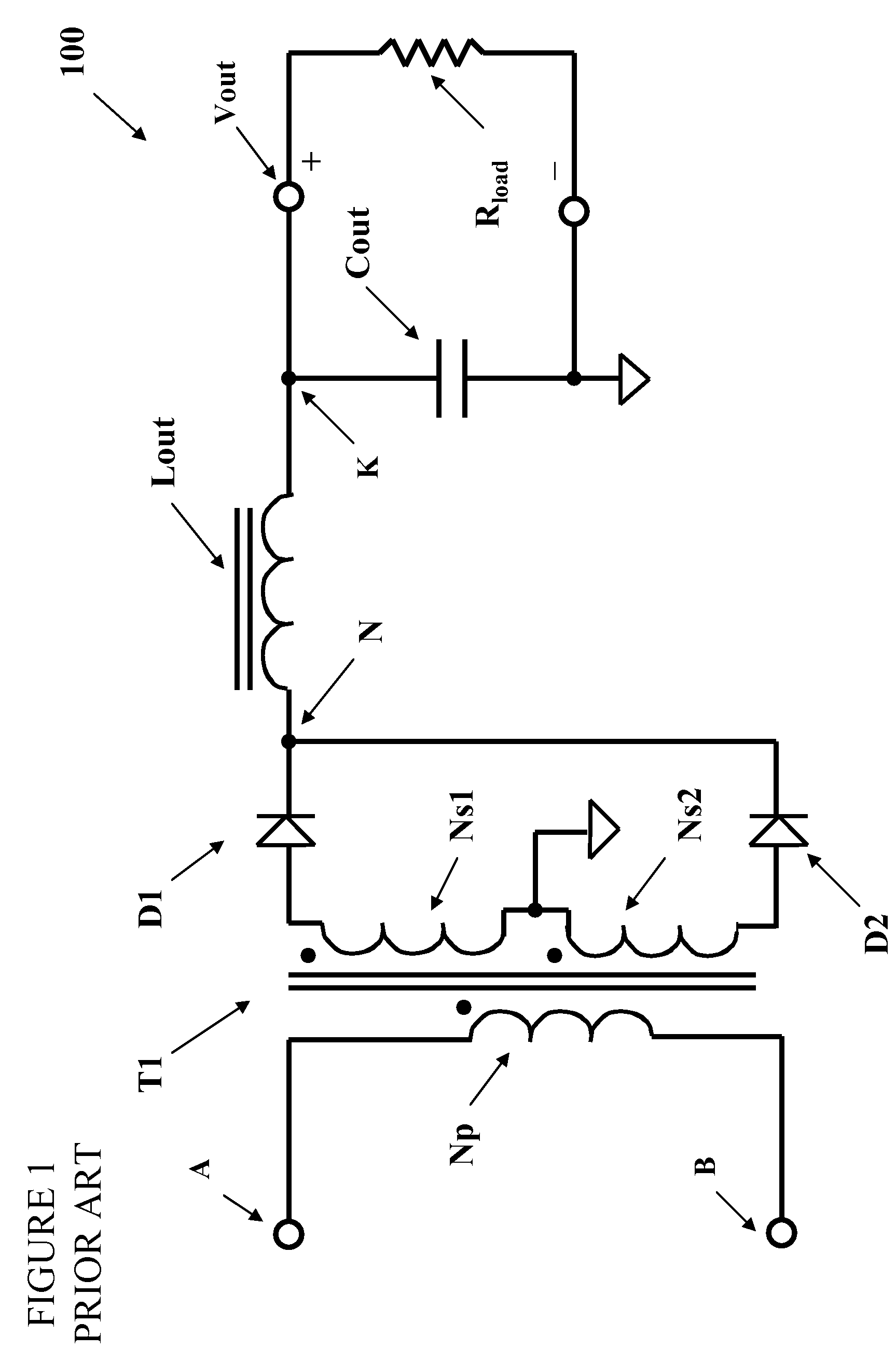Ripple reduction for switch-mode power conversion
a power converter and switch-mode technology, applied in the field of switch-mode power converters, can solve the problems of significant challenges, inability to meet the needs of more challenging applications, and inability to sustain power losses in the windings, and achieve the effect of reducing the level of output ripple voltage, low output ripple voltage, and low output ripple voltag
- Summary
- Abstract
- Description
- Claims
- Application Information
AI Technical Summary
Benefits of technology
Problems solved by technology
Method used
Image
Examples
Embodiment Construction
[0026]The specific embodiments of the invention discussed hereinbelow provide particular ways of implementing the invention, and are not provided to limit the scope thereof, or the context in which they are applied. The invention will be described with respect to preferred embodiments employing various switch-mode power conversion topologies that may benefit from a circuit to cancel or reduce a ripple current at an output thereof. The principles of the invention, however, may be applied to other types of power converters including, without limitation, motor controllers, power amplifiers, and other applications wherein a switch-mode power conversion circuit may be used to convert an input voltage waveform into an output voltage waveform. The language “switch-mode power conversion” as used herein includes power converter circuits including diodes passively coupled to an ac voltage source to produce a rectified output voltage.
[0027]A current-doubler rectification circuit is described t...
PUM
 Login to View More
Login to View More Abstract
Description
Claims
Application Information
 Login to View More
Login to View More - R&D
- Intellectual Property
- Life Sciences
- Materials
- Tech Scout
- Unparalleled Data Quality
- Higher Quality Content
- 60% Fewer Hallucinations
Browse by: Latest US Patents, China's latest patents, Technical Efficacy Thesaurus, Application Domain, Technology Topic, Popular Technical Reports.
© 2025 PatSnap. All rights reserved.Legal|Privacy policy|Modern Slavery Act Transparency Statement|Sitemap|About US| Contact US: help@patsnap.com



